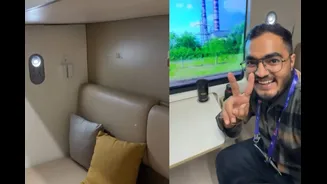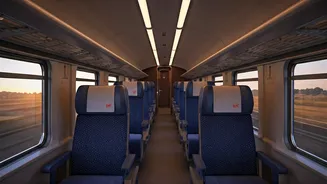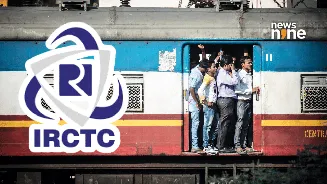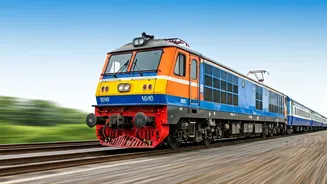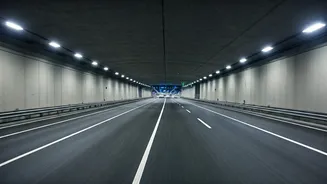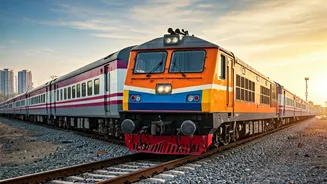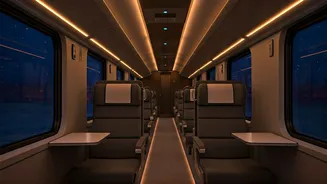Kavach: A Shield
The Kavach system, also known as Train Collision Avoidance System (TCAS), represents a significant stride in railway safety technology. Kavach is designed
to prevent accidents by automatically applying brakes if the driver fails to do so, or if it detects another train approaching on the same track. This system also incorporates features like automatic whistle blowing at designated locations and continuous updates on signal aspects. The recent trial in Prayagraj Division showcased the system's ability to operate at a high speed of 160 kmph, an impressive feat that underscores the efficiency and effectiveness of Kavach in ensuring the safety of railway operations. The widespread deployment of Kavach on busy routes is a crucial step towards reducing railway accidents and enhancing the overall safety of train travel, benefiting millions of commuters in India.
Trial in Prayagraj
The Prayagraj Division served as the location for a critical trial of the Kavach system, highlighting its real-world application and performance capabilities. This trial run was conducted at an impressive speed of 160 kmph, which served to demonstrate Kavach's efficiency and responsiveness under conditions mirroring high-speed railway operations. During the test, the system underwent rigorous evaluation to ensure it can effectively handle various scenarios and maintain a high standard of safety. The success of the trial in Prayagraj Division is an indicator of the potential for broader implementation and upgrades to existing infrastructure across the railway network. Such improvements are expected to increase reliability and efficiency, creating a safer environment for travelers along critical routes such as the Delhi-Howrah corridor.
Delhi-Howrah Route
The Delhi-Howrah route is a vital artery of the Indian Railways, carrying a massive volume of passenger and freight traffic. The implementation of Kavach on this route is a priority due to the high traffic density and the need to mitigate safety risks. Upgrading this corridor with Kavach involves installing the system across locomotives, tracks, and signaling systems. This comprehensive approach assures that all components are integrated and working together to protect railway assets and save lives. The move is a part of a larger plan to enhance railway safety throughout the country, prioritizing high-traffic and accident-prone areas. This route's modernization effort will lead to smoother and safer journeys for commuters using this critical link between major cities, ultimately contributing to the nation’s infrastructure development.
Safety Enhancements
The introduction of Kavach represents a monumental leap in railway safety measures. The system's primary function is to prevent collisions by autonomously activating train brakes in hazardous situations. Besides collision avoidance, Kavach supports several other safety features, like preventing over-speeding, alerting drivers to signals, and providing real-time information about train locations and movements. This combination of features offers a comprehensive safety net, greatly minimizing the probability of accidents due to human error or technical failures. Implementing such advanced technologies is expected to bolster the safety standards on Indian railways. These initiatives are not only aimed at protecting lives but also at boosting the public's confidence in railway travel.
Modernizing Railways
The integration of Kavach technology is a crucial aspect of modernizing India’s railway infrastructure. This advanced system signifies a move away from antiquated safety practices to state-of-the-art technological solutions, that are essential for handling the increasing demands of modern railway operations. The adoption of such technologies necessitates investments in infrastructure, training, and maintenance to ensure seamless integration and operational efficacy. These upgrades contribute to the overall goal of transforming the railway system into a safer, more efficient, and dependable mode of transportation for millions of passengers. By embracing modern technologies, the Indian Railways are positioning themselves to meet the growing needs of a developing economy while enhancing the safety and experience of travelers.

